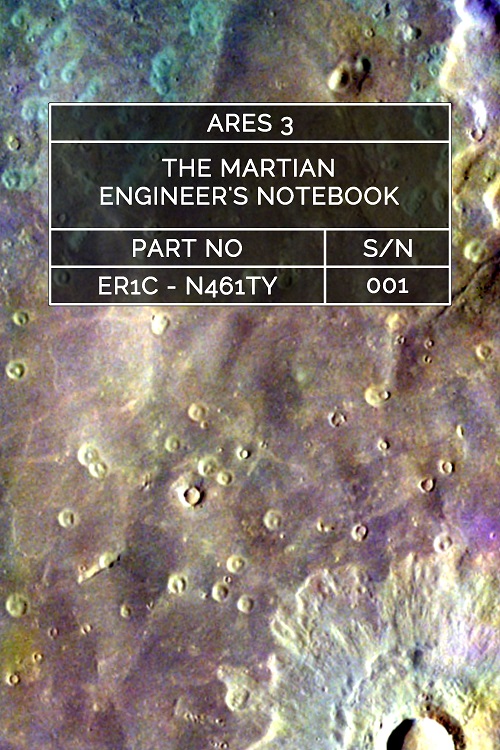 The Martian Engineer's Notebook,
The Martian Engineer's Notebook,
Volume 1 & 2
Available exclusively from Amazon (Kindle)
Volumes 1 & 2 are available in a Compiled Edition!
Science and Engineering are inherently dramatic enterprises. Initial impressions of how something should work are often inaccurate. First attempts at calculating what an outcome should be often aren't complete. Creative imagination and persistence can often find its way around seemingly insurmountable obstacles. Shortsightedness can render dire threats invisible and lead to ruin.
The Martian Engineer's Notebook is a scientific supplement and critique of
The Martian by Andy Weir. It contains explanations of scientific concepts and detailed solutions to problems related to the challenges of Mark Watney's ordeal on Mars. Should he have survived? What did he get right? What did he get wrong? What did he get wrong, but it didn't matter? These are the kinds of questions that
The Martian Engineer's Notebook seeks to provide researched and organized answers to.
Volume 1 covers weather on Mars and an in-depth analysis of the resources at Mark's disposal as well as what it takes to build a farming ecosystem on Mars.
Volume 2 covers the process of burning hydrazine inside the Hab and the thermodynamic consequences.
Genre: Non-Fiction
Forward to The Martian Engineer's Notebook, Volume 1
The intent of
The Martian Engineer's Notebook is not to be a literary critique of
The Martian by Andy Weir. Instead, this is a guide to understanding the science and engineering challenges of an astronaut marooned on Mars. This work follows the plot that Mark Watney participates in, critiques the science, provides a greater depth of scientific analysis of the situations, and includes detailed calculations that more accurately reflect the physics, chemistry and biology.
The assumption in the writing of this scientific guide is that the reader has already read The Martian. The analysis is topical in nature, so some events will be discussed out of order. Corrections in the calculations and analysis of the situations will not only change which outcomes are close calls, but the drawn out nature of some explanations will slow down the flow of information, possibly increasing the tension (or tedium). Early in the writing of this guide, I had moments where I was anxious about whether Mark Watney would have enough resources to get by.
This work has been developed from the perspective of a reader that hasn't yet read the entire work. This approach may create situations where dead ends are created by a difference in consumption of materials from the original story by Mark Watney as he endeavors to survive. In cases where a dead end is reached, calculations or alternate suggestions will be made to enable the story of his ordeal to go on, though maybe not exactly as scripted.
No human description of a scientific principle or natural phenomenon is a perfectly accurate representation. This work is no different. While it is more carefully researched and the problems are more carefully explained than they are in the original work, not every scientific deficiency will be addressed perfectly. Certainly, some details will be overlooked or not completely elaborated. Hopefully, this guide will give readers an entertaining foothold on the body of work that has been produced by the scientific community at large.

 The Martian Engineer's Notebook,
The Martian Engineer's Notebook,